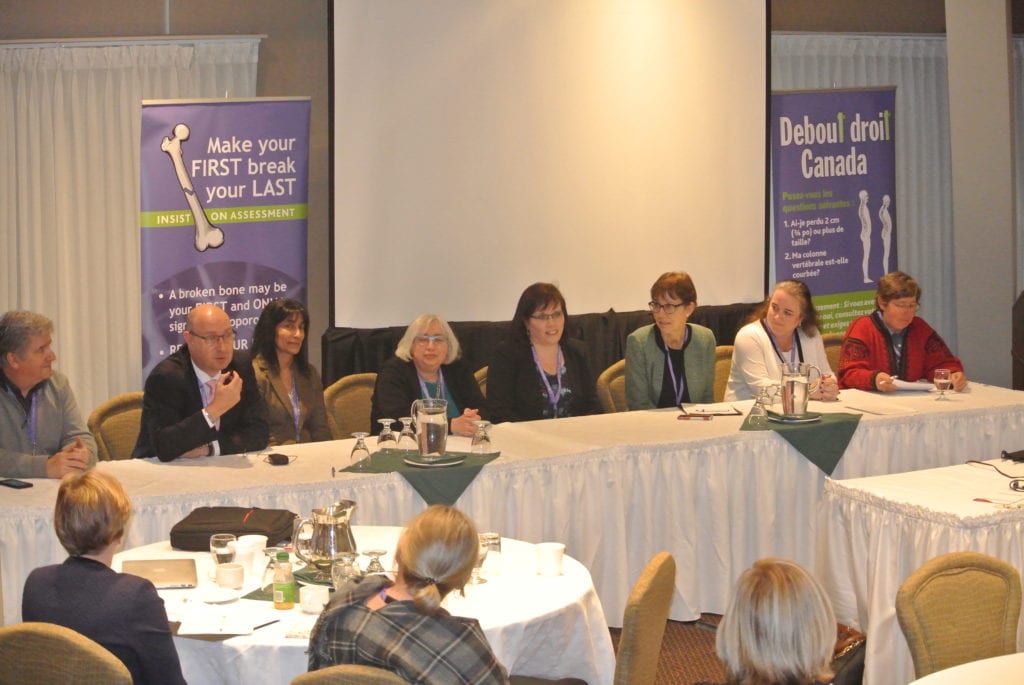Celiac Disease and Bone Health
Aliya Khan, Heather Frame, Claudia Gagnon, Rowena Ridout , Lianne Tile, Wendy Ward, Sandra Kim
Recently Duerksen and colleagues published on fracture risk assessment in celiac disease – a registry-based cohort study (1). This study evaluated the incidence of major osteoporotic fractures (hip, spine, forearm and humerus) in patients with celiac disease confirmed by a positive celiac profile on blood testing, and compared the risk of fracture with those who did not have celiac disease. Individuals with celiac disease had more fractures in comparison to those who did not have celiac disease (HR 1.43 (95% CI 1.11-1.86)) (1).
This study confirms that celiac disease is associated with an increased risk of fracture. This registry-based study supports previous research (2) indicating that celiac disease appeared to be associated with an increased risk of fracture, however previous research was not conclusive as it was not clear if the increased fracture risk was due to the presence of celiac disease. Also, the impact of the gluten-free diet on fracture risk is still not well understood. People with celiac disease benefit from an assessment of bone health and fracture risk.
1. What is celiac disease and how does it affect bone health?
Celiac disease results from an immune reaction to the gluten present in wheat and other foods – ingestion of these foods results in the small bowel lining becoming flat, and affects absorption of nutrients including calcium, phosphate and vitamin D which are essential for bone mineralization and bone health. Also, celiac disease is associated with the release of inflammatory cytokines or proteins which increase the rate of bone loss, and may negatively affect bone formation.
2. How does FRAX calculate fracture risk in celiac disease?
The FRAX calculation incorporates multiple risk factors for fracture and provides a prediction of future fracture risk over the next 10 years. If the bone mineral density data is entered into the calculator, it does not incorporate the presence of another cause for the osteoporosis (such as celiac disease) in determining the fracture risk. However, if BMD is not provided, it includes the presence of a secondary cause for the osteoporosis in determining fracture risk. This study showed that people with celiac disease had more fractures than expected if the celiac disease had not been present. The FRAX calculation appropriately predicted a higher fracture risk if the presence of celiac disease was considered as a secondary cause, or if BMD data was entered (1).
3. Are there any limitations of this study?
This data may not apply to men or younger individuals as the majority of the patients were women and the mean age was 60yrs. . It was also not possible to evaluate the patient’s ability to follow a gluten-free diet – some but not all patients may have followed the diet, and this may have affected the results of the study. Finally, the study was relatively small, with 693 patients with celiac disease and 68,037 patients in the general population.
4. How should this information be applied to people with celiac disease?
People with celiac disease benefit from an assessment of bone health and fracture risk. It is important to ensure that adequate calcium, phosphate and vitamin D are being ingested and absorbed, as malabsorption of these essential nutrients can impair bone quality and strength. (3). The importance of strict adherence to the gluten-free diet needs to be emphasized to enhance absorption of key nutrients for optimal bone quality and strength in those with celiac disease.
References
- Duerksen DR, Lix LM, Johansson H, McCloskey EV, Harvey NC, Kanis JA and Leslie WD. Fracture risk assessment in celiac disease: a registry-based cohort study. Osteoporosis International. August 3, 2020
- Heikkilä K, Pearce J, Mäki M and Kaukinen K. Celiac disease and bone fractures: A systematic review and meta-analysis. Journal of Clinical Endocrinology & Metabolism, 2015;100(1):25-34.
- Fouda MA, Khan AA, Sultan M, Rios LP, McAssey K and Armstrong D. Canadian evaluation and management of skeletal health in celiac disease: Position statement. Canadian Journal of Gastroenterology. 2012;26(11):819-29.


